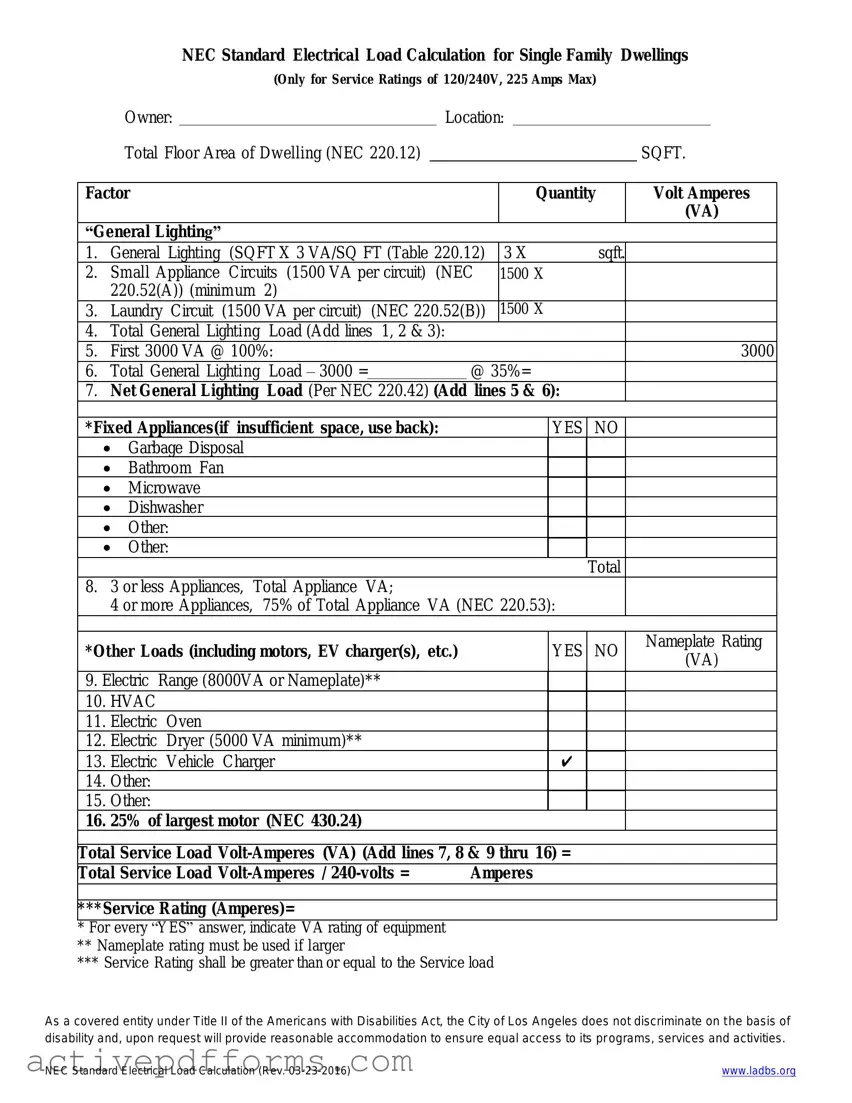Electricity powers the modern world, and ensuring that buildings have a safe, efficient, and reliable electrical supply is a critical aspect of designing and constructing safe living and working environments. The LADBS NEC Standard Electrical Load Calculation form plays a pivotal role in this endeavor within the jurisdiction of the Los Angeles Department of Building and Safety (LADBS). Utilized by architects, engineers, and contractors, this form facilitates the precise computation of a building's electrical load. This calculation is essential for determining the appropriate size of service, conductors, and equipment that will safely meet the electrical demand of the building. By meticulously assessing factors such as lighting, appliances, heating, and air-conditioning loads, the form ensures compliance with the National Electrical Code (NEC), which sets the benchmark for electrical safety in residential, commercial, and industrial occupancies. The significance of the LADBS NEC Standard Electrical Load Calculation form cannot be overstated, as it not only guarantees adherence to legal codes but also underpins the operational efficiency and safety of electrical systems in new and modified buildings.

